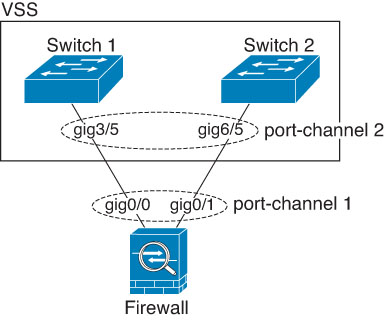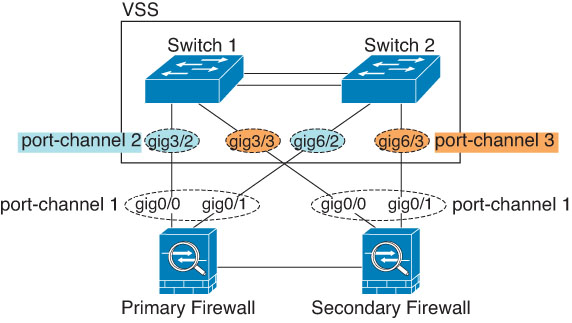Connecting to an EtherChannel on Another Device
The device to which you connect the Firewall Threat Defense EtherChannel must also support 802.3ad EtherChannels; for example, you can connect to the Catalyst 6500 switch or the Cisco Nexus 7000.
When the switch is part of a Virtual Switching System (VSS) or Virtual Port Channel (vPC), then you can connect Firewall Threat Defense interfaces within the same EtherChannel to separate switches in the VSS/vPC. The switch interfaces are members of the same EtherChannel port-channel interface, because the separate switches act like a single switch.

|
|
If the Firewall Threat Defense device is in transparent firewall mode, and you place the Firewall Threat Defense device between two sets of VSS/vPC switches, then be sure to disable Unidirectional Link Detection (UDLD) on any switch ports connected to the Firewall Threat Defense device with an EtherChannel. If you enable UDLD, then a switch port may receive UDLD packets sourced from both switches in the other VSS/vPC pair. The receiving switch will place the receiving interface in a down state with the reason "UDLD Neighbor mismatch". |
If you use the Firewall Threat Defense device in an Active/Standby failover deployment, then you need to create separate EtherChannels on the switches in the VSS/vPC, one for each Firewall Threat Defense device. On each Firewall Threat Defense device, a single EtherChannel connects to both switches. Even if you could group all switch interfaces into a single EtherChannel connecting to both Firewall Threat Defense devices (in this case, the EtherChannel will not be established because of the separate Firewall Threat Defense system IDs), a single EtherChannel would not be desirable because you do not want traffic sent to the standby Firewall Threat Defense device.

